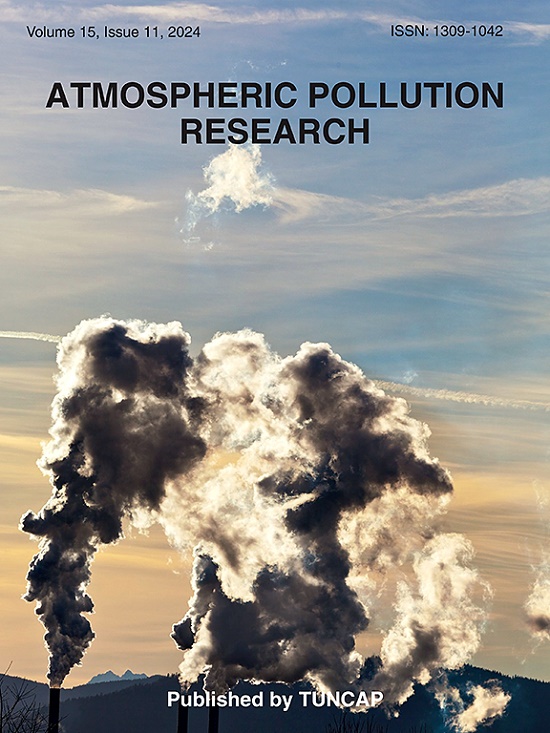海拔对轻型汽油车的影响:燃料消耗和空气污染
IF 3.5
3区 环境科学与生态学
Q2 ENVIRONMENTAL SCIENCES
引用次数: 0
摘要
在全球碳中和目标和排放法规的推动下,汽油车在高原环境下的油耗和排放特性受到了广泛关注。本文采用滑行阻力试验对轻型汽油车在高海拔环境实验室中的行驶阻力进行校正,以保证实验室试验的准确性。最后,在高海拔环境实验室进行了等速油耗试验和新欧洲驾驶循环排放试验。油耗特性结果表明,在中低速度(低于5000米高度)下,燃油效率普遍随高度的增加而提高。对于高速范围,空气阻力在5000m以下变得更加突出,从而降低了总体燃油消耗。然而,一旦高度接近5000米,所有速度范围内的燃油消耗都呈上升趋势。高速时的油耗较早进入上升趋势(在相对较低的高度)。排放特性分析结果表明,随着海拔的升高,由于燃烧恶化,CO和THC的排放量显著增加。冷启动阶段的贡献显著增加(CO占77.1%,THC占66.3%),成为排放增加的核心因素。由于燃烧温度与三元催化转化器(TWC)效率之间存在博弈关系,NOx排放量呈现先减少后增加的趋势。由于TWC性能逐渐下降,其瞬时发射特性不稳定。总的来说,这些结果可以用来推动车辆的能源效率和减排目标。本文章由计算机程序翻译,如有差异,请以英文原文为准。

Effects of altitude on light gasoline vehicles: fuel consumption and air pollution
Driven by the global carbon neutrality goal and emission regulations, gasoline vehicles' fuel consumption and emission characteristics in the plateau environment have received extensive attention. In this paper, the running resistance of light gasoline vehicles in a high-altitude environment laboratory is corrected by coasting resistance tests to ensure the accuracy of laboratory tests. Finally, a constant speed fuel consumption test and a New European Driving Cycle emission test were carried out in the high-altitude environment laboratory. The results of fuel consumption characteristics show that at low-to-medium speeds (below 5,000m altitude), fuel efficiency generally improved with increasing altitude. For the high-speed range, air resistance becomes more prominent below 5000m, which reduces overall fuel consumption. However, once the altitude approaches 5000m, all speed ranges show an upward trend in fuel consumption. Fuel consumption at high speeds enters an upward trend earlier (at relatively low altitudes). The results of emission characteristics show that the emission of CO and THC increases significantly with the increase of altitude due to combustion deterioration. The contribution of the cold start-up phase increased significantly (77.1 % CO and 66.3 % THC), which became the core factor of the increase in emissions. Due to the game between the combustion temperature and the efficiency of the three-way catalytic converter (TWC), NOx emission shows a trend of first decreasing and then increasing. Its instantaneous emission characteristics are not stable because of the gradual decline of TWC performance. In general, these results can be used to drive vehicle energy efficiency and emission reduction targets.
求助全文
通过发布文献求助,成功后即可免费获取论文全文。
去求助
来源期刊

Atmospheric Pollution Research
ENVIRONMENTAL SCIENCES-
CiteScore
8.30
自引率
6.70%
发文量
256
审稿时长
36 days
期刊介绍:
Atmospheric Pollution Research (APR) is an international journal designed for the publication of articles on air pollution. Papers should present novel experimental results, theory and modeling of air pollution on local, regional, or global scales. Areas covered are research on inorganic, organic, and persistent organic air pollutants, air quality monitoring, air quality management, atmospheric dispersion and transport, air-surface (soil, water, and vegetation) exchange of pollutants, dry and wet deposition, indoor air quality, exposure assessment, health effects, satellite measurements, natural emissions, atmospheric chemistry, greenhouse gases, and effects on climate change.
 求助内容:
求助内容: 应助结果提醒方式:
应助结果提醒方式:


